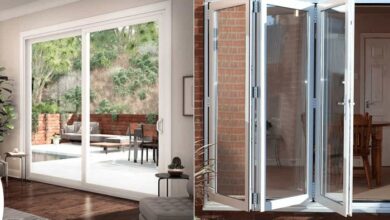Lighting the Way Forward: Why Businesses Are Switching to LEDs

Lighting is more than just a practical need in today’s work world, where things change quickly. It affects the picture of the brand, how well the workplace works, and how much it costs to run. As the cost of energy keeps going up and being environmentally friendly becomes more important to businesses, they are rethinking how they light their areas. LED lighting, which is new, efficient, and easy to create, is being chosen by more and more people.
- Reducing Operational Costs Without Compromising Performance
Every business looks for ways to lower expenses without affecting productivity. A lot of the power that commercial buildings use, sometimes up to 40 percent, goes to lighting. By switching to LED lighting, businesses immediately cut energy use because LEDs require far less electricity to produce the same brightness.
For facilities that operate around the clock—like warehouses, hospitals, and manufacturing plants—the savings are even more substantial. Fewer replacements and reduced energy consumption make LEDs a long-term cost-cutting tool that keeps operations lean and efficient.
- Meeting Environmental and Corporate Sustainability Goals
Today’s companies are judged not only by their products or services but also by how they impact the planet. Adopting LED lighting helps businesses align with sustainability goals by reducing carbon emissions and lowering power demand. LEDs last a lot longer and use a lot less energy, so fewer lights end up in landfills.
This eco-friendly approach can improve a brand’s reputation and strengthen its appeal to eco-conscious clients and investors. Many organizations now include lighting upgrades as part of their environmental, social, and governance (ESG) strategies, viewing LED adoption as a measurable step toward greener operations.
- Creating Better Lighting Quality and Visual Comfort
Lighting quality affects how people feel and perform. Harsh or flickering light can cause headaches, strain, or fatigue, which ultimately lowers productivity. Modern LED lighting systems are designed to provide steady, even illumination without glare or flicker.
They also offer superior color rendering, which makes spaces appear more natural and appealing. In offices, this leads to higher employee comfort and focus. In retail stores, it means products look more attractive and true to color. The shift to LEDs is not just about energy—it’s about creating environments that feel professional, comfortable, and visually consistent.
- Enhancing Brand Presentation and Customer Experience
Lighting is a key part of branding. Whether in a café, showroom, or hotel lobby, the right light sets the tone and enhances customer experience. LED lighting offers flexibility that traditional bulbs cannot match. Businesses can pick from different color temperatures or use scenes with changing lights that change based on the time of day or the number of customers.
A retail boutique, for instance, can highlight merchandise with focused beams, while a restaurant can use warmer tones to create a welcoming atmosphere. This ability to tailor lighting for mood and function gives brands a creative edge that reinforces identity and appeal.
- Leveraging Smart and Connected Lighting Systems
One of the biggest transformations in lighting technology is the integration of smart controls. Modern LED systems can connect to digital platforms, allowing managers to monitor and adjust lighting remotely. Automated sensors can dim or turn off lights when rooms are empty, while scheduling software can optimize brightness for different tasks or time periods.
These smart solutions not only save more energy but also collect data that helps improve building performance. For example, motion sensors can reveal usage patterns, helping businesses redesign space layouts for better efficiency. LED lighting has effectively become part of the smart building ecosystem, blending energy management with digital convenience.
- Strengthening Workplace Safety and Visibility
In manufacturing facilities, parking lots, and logistics centers, proper lighting can mean the difference between safety and risk. LEDs deliver bright, consistent illumination with no warm-up time, ensuring full visibility as soon as the switch is turned on.
Because LED fixtures stay cool and resist vibration, they are safer in environments where heat or movement is common. Their long lifespan reduces maintenance interruptions, which means fewer ladder climbs and less downtime. From warehouses to outdoor work zones, LEDs support safer, more reliable operations.
- Reducing Maintenance and Downtime
Traditional bulbs often fail unexpectedly and require frequent replacement, disrupting workflows—especially in high-ceiling spaces where maintenance is time-consuming. LEDs can last up to 50,000 hours or more, which means years of continuous use before needing attention.
For business owners and facility managers, this translates into less labor, fewer interruptions, and lower costs associated with replacements. Many organizations report that once they switch to LED lighting, maintenance expenses drop by more than half.
- Supporting Employee Health and Well-Being
Human-centric lighting is an emerging trend in workplace design, and LEDs play a crucial role in it. Studies show that the color temperature and intensity of light influence human circadian rhythms, mood, and alertness.
LEDs can be tuned to mimic natural daylight patterns—cooler, brighter tones in the morning to promote alertness and warmer tones later to support relaxation. By aligning lighting with the body’s natural rhythm, businesses can create healthier and more engaging work environments, leading to improved morale and focus.
- Improving Aesthetics and Modern Appeal
Modern interiors rely heavily on design lighting to create ambiance and style. Unlike traditional fluorescent tubes or bulky fixtures, LEDs are available in sleek, minimalist forms that blend seamlessly into contemporary architecture. They can be recessed, suspended, or integrated into walls, furniture, or signage.
This design flexibility allows architects and designers to craft spaces that look modern and energy-efficient at the same time. From hospitality venues to tech offices, LED lighting adds a sophisticated visual element that enhances the overall aesthetic of the brand space.
- Delivering Reliable Performance Across All Environments
Another major reason businesses choose LEDs is reliability. Whether installed indoors or outdoors, LEDs perform consistently across temperature extremes. They’re resistant to shock, moisture, and dust, making them ideal for warehouses, factories, and public areas exposed to the elements.
Even in challenging conditions such as cold storage or outdoor signage, LEDs maintain brightness and efficiency. This durability ensures that lighting systems remain dependable year-round, reducing the risk of outages that could affect operations.
- Attracting Customers and Clients with Modern Efficiency
A well-lit business stands out. LED lighting enhances curb appeal and makes commercial spaces more inviting after dark. For storefronts, exterior LED signage and façade lights can attract attention while consuming a fraction of the energy of older systems.
Clients and visitors also notice the difference—bright, consistent lighting communicates professionalism, cleanliness, and modernity. When combined with sustainable initiatives, it reinforces the image of a forward-thinking company.
- Long-Term Return on Investment
When assessing any major business upgrade, return on investment is a key consideration. Although LED systems may require a higher initial expense, the payback period is typically short—often within two to three years. After that, the savings continue to accumulate through lower energy bills, reduced maintenance, and extended fixture life.
Businesses also gain intangible value: improved safety, better aesthetics, and stronger brand image. Over the long run, LED adoption delivers one of the highest ROIs of any facility improvement.
- Staying Ahead of Regulatory and Energy Standards
Across the globe, governments are introducing stricter efficiency standards and phasing out outdated lighting technologies. Switching early to LED lighting allows businesses to stay compliant and avoid future replacement costs when older bulbs become obsolete.
Some regions even offer tax credits or rebates for energy-efficient upgrades. Forward-thinking companies view LED conversion as both a compliance strategy and a proactive move toward future-proofing their facilities.
Final Thoughts
The shift toward LED lighting is not just a passing trend—it represents a smarter, more sustainable way to illuminate the business world. Companies that adopt LED technology gain tangible financial advantages while also enhancing safety, comfort, and brand image.
As efficiency regulations tighten and energy awareness grows, LED systems will continue to lead the lighting revolution. Businesses that make the switch today aren’t simply saving money—they are positioning themselves as innovators who light the way toward a brighter, greener future.




